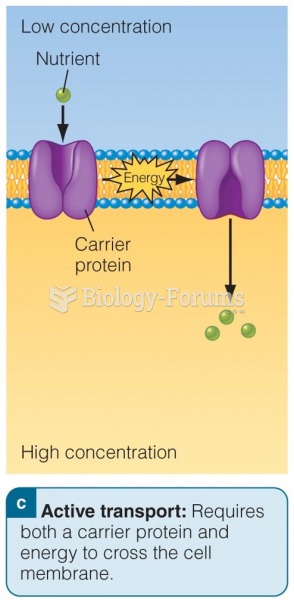Answer to Question 1
Chlamydiae are seen as elementary bodies or reticulate bodies. Elementary bodies are the invasive particles that attach to and enter the host cell. Once inside the host cell, they organize into reticulate bodies. These reticulate bodies are the metabolically active components of the disease, undergoing binary fission and condensation to produce new elementary bodies. After the host cell undergoes lysis, the newly formed elementary bodies are released for further host cell invasion.
Reticulate bodies, although equipped with RNA and DNA, are unlike other bacteria in that they require a host cell for replication. They are unable, therefore, to survive outside of the body.
Reiter syndrome may develop as a complication of chlamydia. The syndrome is an autoimmune arthritic condition that also includes urethritis, conjunctivitis, and papulosquamous eruptions that occur on the feet and hands.
In men, infection with C. trachomatis may cause infertility if epididymitis and prostatitis are present. In women, persistent fallopian tube damage and pelvic inflammatory disease may cause infertility.
Cervical chlamydia is passed from the mother to the neonate during delivery. Neonatal complications include a variety of ocular diseases and the development of chlamydial pneumonitis. In underdeveloped countries, chlamydia is a leading cause of childhood blindness.
Answer to Question 2
Ligaments and tendons are both composed of dense connective tissue rich in organized bundles of collagen. Both tissues have neural innervation and a blood supply, although blood circulation to these tissues is limited.
Tendons are found at the ends of muscle bundles and act to attach muscle to bone. They are surrounded by a connective tissue sheath containing a small amount of fluid that serves to reduce friction as the muscle works over the bone to which it is attached.
Ligaments are closely associated with the articular capsules of joints and are responsible for binding the articular ends of bone to one another. They are also rich in inelastic collagen, but afford a certain degree of pliability for joint movement to occur.
Jennifer's rehabilitation will include techniques that will increase her joint proprioception. What is proprioception, and what will occur if this neural function is not restored?
Proprioception is provided by nerve endings in the tendons and ligaments of surrounding joints. Proprioception senses joint position, and reflexively adjusts the tension of surrounding muscle to ensure the joint is stabilized. When proprioception is lost, joint instability and destructive change eventually result.
A protective fibrous outer layer surrounds the synovial membrane. The membrane itself contains a series of folds to ensure a full range of movement in the joint. Cells of the membrane produce and secrete synovial fluid. The fluid plays a critical role in maintaining a low-friction environment within the joint and facilitates joint movement through its lubricating ability. Synovial fluid also provides articular cartilage with necessary nutrients as it circulates within the joint space.







